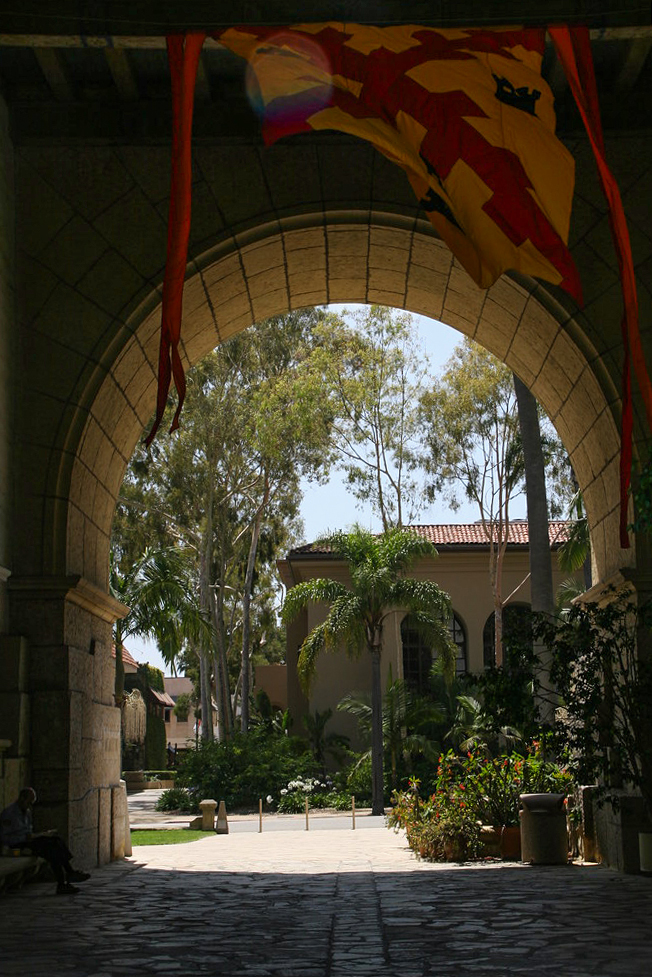
The Santa Barbara News-Press was born in 1868 and died in 2023 at age 155. Its glory years ran from 1932 until 2000, when the New York Times sold it to Wendy McCaw, who rode it to hell.
That ride began with the Santa Barbara News Press Controversy in 2006 and ended when Ampersand, the company McCaw created to hold the paper’s bag of assets (which did not include its landmark building downtown, which McCaw kept), filed for Chapter 7 bankruptcy in late July of last year. Here are stories about the death of the paper in three local news journals that have done a great job of taking up the slack left when the News-Press began to collapse, plus one in the LA Times:
- ‘Santa Barbara News-Press’ Files for Bankruptcy: Publisher Ampersand Claims Few Assets and Many Creditors, by Jean Yamamura in the Santa Barbara Independent (July 23, 2023)
- Santa Barbara News-Press Declares Bankruptcy, Staff Told All Jobs ‘Eliminated’, by Joshua Molina, in Noozhawk (July 23, 2023)
- Santa Barbara News-Press Files for Bankruptcy, Staff Fired, by Edhat Staff (July 24, 2023)
- Santa Barbara News-Press bankruptcy brings uneasy end to an owner’s bitter tenure, by James Rainey, in the Los Angeles Times. (July 29, 2023)
I followed those with this in We Need Deep News:
From what I’ve read so far (and I’d love to be wrong) none of those news reports touch on the subject of the News-Press‘ archives, which conceivably reach back across the century and a half it was published. There can’t be a better first draft of history for Santa Barbara than that one. If it’s gone, the loss is incalculable. (August 18 2023)
Last month brought bad news about that:
- ‘Santa Barbara News-Press’ Online Assets to Be Sold: Bankruptcy Sale for $250,000 Subject to Bids in April, by Jean Yamamura in the Santa Barbara Independent March 8, 2024
- A local paper went bankrupt. Now a faraway buyer wants its assets: The Santa Barbara News-Press’s digital assets are up for sale. Locals worry they could become a farm for AI-generated SEO bait. By Ernie Smith in Fast Company. (March 5, 2024)
- Santa Barbara’s Collective Memory, Sold for Kindling: Will ‘NewsPress.Com’ Become a Zombie Website? by William Belfiore in the Independent. (March 29, 2024)
But then, thanks to William Belfiore’s appeal in that last piece, we learned this:
- ‘Santa Barbara News-Press’ Website Goes to ‘Local Kids’ Group Fronted by Ben Romo Makes Winning Auction Bid of $285,000, by Jean Yamamura in the Independent (Apr 09, 2024)
The only mention of archives was in the closing sentences of that piece:
The purchase of the website included the Santa Barbara News-Press trademark, which would be important to the groups looking at the physical archive of back issues, photographs, and clippings by topic. Romo, who was once a paper boy for the daily, acknowledged that his group was supportive of the archive remaining local, too.
I don’t know what that means, and I haven’t checked. But I am sure that the archives ought to be managed by the community as a common pool resource.
As it happens, my wife and I are visiting scholars at the Ostrom Workshop at Indiana University, which is concerned with this kind of thing, because its namesake, Elinor Ostrom, won a Nobel Prize in Economics for her work on how commons are self-governed. In her landmark book, Governing the Commons: The Evolution of Institutions for Collective Action, she lists eight principles for managing a commons, which are summarized here:
- Define clear group boundaries.
- Match rules governing use of common goods to local needs and conditions.
- Ensure that those affected by the rules can participate in modifying the rules.
- Make sure the rule-making rights of community members are respected by outside authorities.
- Develop a system, carried out by community members, for monitoring members’ behavior.
- Use graduated sanctions for rule violators.
- Provide accessible, low-cost means for dispute resolution.
- Build responsibility for governing the common resource in nested tiers from the lowest level up to the entire interconnected system.
Journalists, especially those who report news, are not herding animals. They tend to be competitive and territorial by both nature and purpose. So the collection of news entities I wrote about in We Need Wide News and We Need Whole News will almost certainly not cohere into a commons such as Lin (her nickname) Ostrom addresses in that list.
But they should cohere around archives—not only because that’s the right thing to do, but because they need those archives. We all do.
So I hope Santa Barbara’s many journals, journalists, friends, supporters, and interested local institutions get together around this challenge. Build a commons around those archives, whatever and wherever they happen to be.
Meanwhile here in Bloomington, my other hometown, we are pushing forward with The Online Local Chronicle that Dave Askins wrote about in the previous installment in this series. We might call that a commons interest here.
Leave a Reply